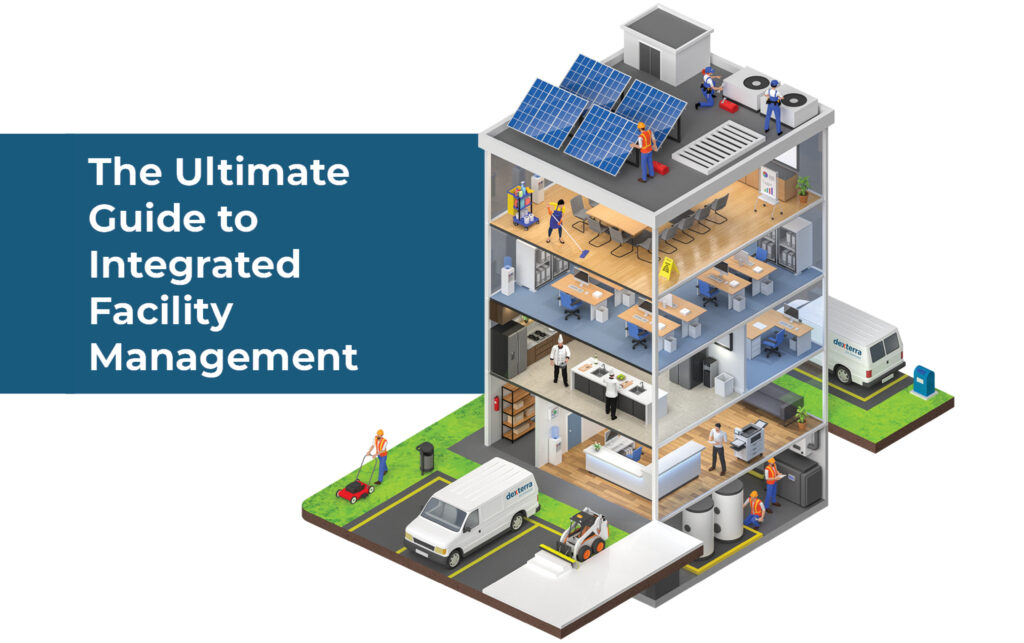Leading Advantages of Total Facility Management for Streamlined Procedures
Total Facility Management (TFM) stands for a tactical strategy to improving functional effectiveness by integrating numerous services, such as upkeep and safety and security, under a unified management framework. The inquiry remains: what certain advantages can organizations harness from taking on TFM, and just how might these benefits change their functional landscape?
Improved Functional Effectiveness
Boosted operational effectiveness is a key benefit of applying total facility management (TFM) methods. TFM incorporates a detailed approach to handling a center's resources, procedures, and framework, ultimately enhancing procedures. By consolidating different solutions-- such as upkeep, safety, cleansing, and room management-- TFM reduces redundancies and improves control amongst various functional features.
The assimilation of technology further enhances this efficiency. Advanced facility management systems provide real-time data analytics, making it possible for facility managers to make educated decisions that enhance process and resource allotment. Anticipating upkeep strategies, as an example, prepare for tools failings before they occur, decreasing downtime and prolonging possession life expectancy.
Additionally, TFM promotes standardized procedures throughout different divisions, making certain uniformity and top quality in service shipment. This uniformity reduces operational disturbances and promotes a much more collective functioning environment. As a result, staff members can concentrate on their core obligations, driving efficiency and enhancing total performance.

Cost Reduction and Financial Savings
Executing total facility management (TFM) not only improves operational effectiveness yet also dramatically contributes to cost decrease and savings. By combining numerous services under a single management framework, organizations can get rid of redundancies and enhance processes, thus lowering functional costs. TFM allows far better purchase strategies, enabling firms to work out bulk investing in agreements with providers and company, bring about lower prices.
Additionally, TFM stresses preventative upkeep, which minimizes unexpected break downs and prolongs the life expectancy of essential equipment. This proactive method not only decreases repair service expenses however likewise improves the integrity of facilitiess, making certain nonstop procedures. In addition, power performance efforts, commonly a crucial focus of TFM, result in considerable financial savings on energy expenses, as facilitiess are enhanced for decreased energy consumption.
Improved Source Management
Reliable source management is a cornerstone of total facility management (TFM), enabling organizations to maximize using their possessions and labor force. By carrying out TFM techniques, organizations can adequately analyze their source allotment, guaranteeing that every asset is utilized successfully and effectively. This alternative approach permits for the recognition of underperforming resources and the possibility for reallocation or improvement.
Additionally, TFM promotes the combination of technology for real-time surveillance of resources, which aids in forecasting maintenance demands and preventing costly downtime. By leveraging information analytics, great post to read organizations can make enlightened decisions concerning resource release, eventually enhancing performance and decreasing waste.
Moreover, TFM advertises a culture of constant renovation, motivating groups to regularly review and refine their source management methods. Total Facility Management. This proactive stance not just reduces functional interruptions yet likewise cultivates innovation, as workers are empowered to suggest renovations based on their direct experiences with resource application
Streamlined Interaction Networks
In total facility management, structured communication channels play an important duty in fostering partnership and performance throughout teams. Efficient interaction ensures that all stakeholders, including facility supervisors, upkeep team, and provider, are lined up with operational requirements and organizational objectives. By developing clear lines of interaction, groups can swiftly deal with issues, share updates, and carry out remedies, thereby minimizing downtime and enhancing efficiency.
With streamlined communication platforms, info is quickly available, enabling real-time updates on upkeep demands, resource allowance, and job timelines. This openness not just minimizes misconceptions however likewise equips workers to make enlightened choices swiftly. Moreover, streamlined communication facilitates better coordination throughout emergency situations, ensuring that all employees are educated and can react immediately.

Boosted Emphasis on Core Activities
A key advantage of total facility management is the increased focus on core tasks, permitting her explanation organizations to focus on their main service purposes - Total Facility Management. By contracting out non-core functions such as safety and security, upkeep, and cleansing, firms can reroute their sources and power in the direction of calculated initiatives that directly add to their affordable benefit and development
Total facility management incorporates different functional jobs under a solitary umbrella, fostering efficiency and minimizing redundancy. This combination not only streamlines procedures yet likewise improves responsibility, guaranteeing that every element of the facility runs sympathetically without drawing away focus from what absolutely matters-- core organization features.
Moreover, this technique allows employees to commit their time and initiatives to tasks that drive advancement and enhance customer complete satisfaction, instead of obtaining slowed down by operational obstacles. With a reliable facility management partner handling everyday operations, companies can accomplish greater dexterity, respond swiftly to market changes, and keep a sharper concentrate on their mission.
Inevitably, boosted concentrate on core activities brings about boosted general efficiency, allowing companies to reinforce their market setting and accomplish their tactical objectives better. - Total Facility Management
Conclusion
To conclude, Total Facility Management dramatically enhances functional performance by consolidating necessary solutions and leveraging data analytics for educated decision-making. Expense reductions and boosted source management add to overall cost savings, while structured communication channels foster partnership amongst stakeholders. By permitting organizations to focus on core tasks, TFM not just maximizes productivity however additionally my link reinforces market positioning. The integration of these benefits highlights the value of TFM in attaining lasting functional excellence.
Total Facility Management (TFM) stands for a critical strategy to boosting functional performance by integrating different services, such as upkeep and security, under a unified management structure.Boosted functional effectiveness is a main advantage of applying total facility management (TFM) strategies. Advanced facility management systems supply real-time data analytics, enabling facility managers to make informed decisions that boost operations and resource allotment.Implementing total facility management (TFM) not just enhances functional effectiveness but additionally dramatically adds to cost decrease and cost savings.Effective resource management is a foundation of total facility management (TFM), enabling companies to enhance the usage of their properties and workforce.
Comments on “Main Reasons to Opt for Total Facility Management for Your Facility”